Last week, we got a good start building our solar rack by designing and building the prototype for the lower layer of solar panels (4 of our 8 Sunpower E20 435W panels). This week, we are moving on up to the upper layer of panels (the other 4 panels). Initially, we thought that we would try to tilt this upper layer of panels to maximize the exposure to the sun. However, after many different ideas and research, we decided to nix that idea. The difficulty of creating a stable tilting mechanism when this layer is elevated off the roof 8.5” just isn’t worth the tradeoff of the additional energy we could collect with tilting. We are confident that we will have more than enough energy coming in with all the panels lying flat. Moving on from that idea, we proceeded to design a simple and secure way to mount these panels (and keep them fixed flat) above the lower layer.
Many iterations ago of this solar rack, we thought we might use aluminum angle to hold up the solar panel. While it would prevent any possibility of dissimilar metal corrosion, using aluminum also was an idea we had to nix. These particular panels are 81.5” long, nearly seven feet. We tested out 2" x 2" x ⅛” aluminum angle, and at that length, it just was not stable enough. We would have probably had to use at least ¼” aluminum to make it stiff enough. That thickness of aluminum is significantly more expensive than the ⅛”, which is already not cheap. Also, the additional thickness negates any benefits in terms of weight over just using thinner steel. In the end, we decided to use steel both for the stands that will elevate it off the roof and also to create a tray for the panel to rest in.


We created stands to raise the panels up 8.5” (to clear the vents and the lower solar panels) with 3/16” x 3” flat stock steel. We welded these pieces together and drilled holes to bolt (with grade-8, 1/2" bolts) to the L-brackets on the Superstrut rails.
 Then, we welded 1”x1”x ⅛” angle iron onto the corner stands to create a tray - almost like a bed frame for a mattress.
Then, we welded 1”x1”x ⅛” angle iron onto the corner stands to create a tray - almost like a bed frame for a mattress.
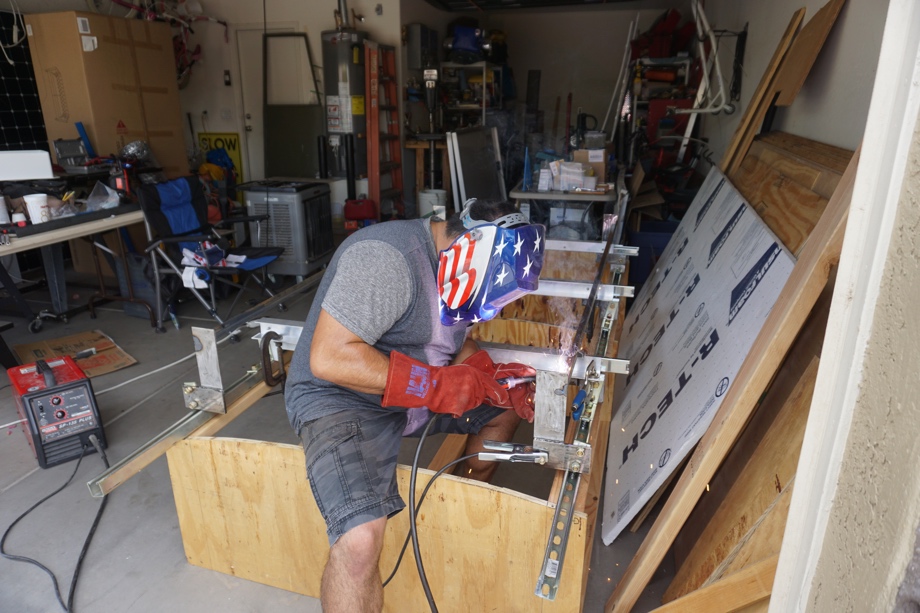
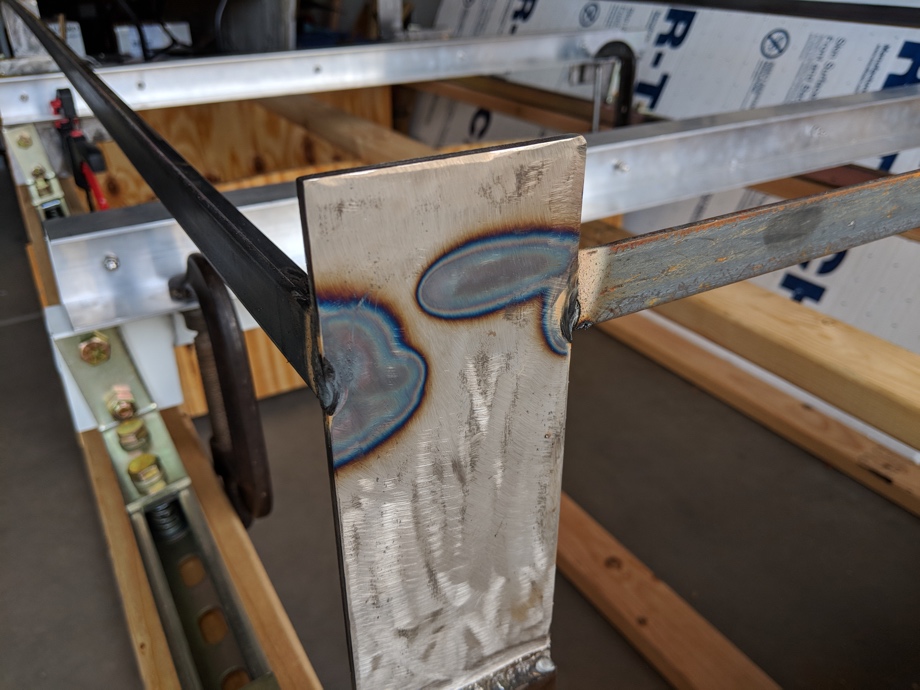 We will line the angle iron tray with some rubber to prevent the dissimilar metal corrosion with the aluminum-framed panels as well as provide a little shock resistance. The panel will sit snugly in the tray, and it should be plenty secure once we get it all clamped and bolted down.
We will line the angle iron tray with some rubber to prevent the dissimilar metal corrosion with the aluminum-framed panels as well as provide a little shock resistance. The panel will sit snugly in the tray, and it should be plenty secure once we get it all clamped and bolted down.
Now that we are pretty satisfied with the design of our prototypes for both the upper and lower level of panels, we need to recreate this whole design three more times for the rest of the solar panels.
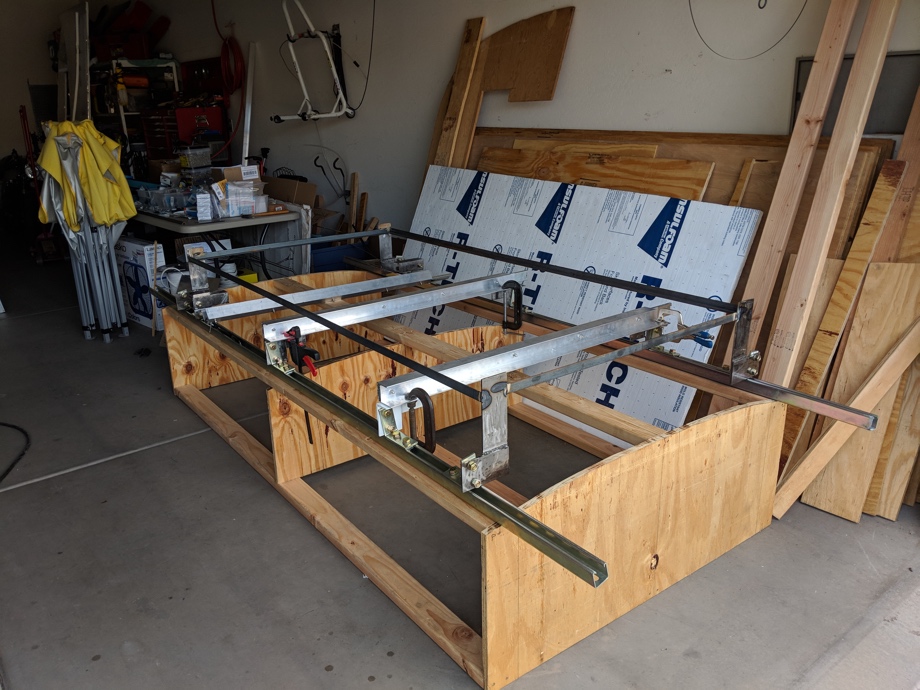

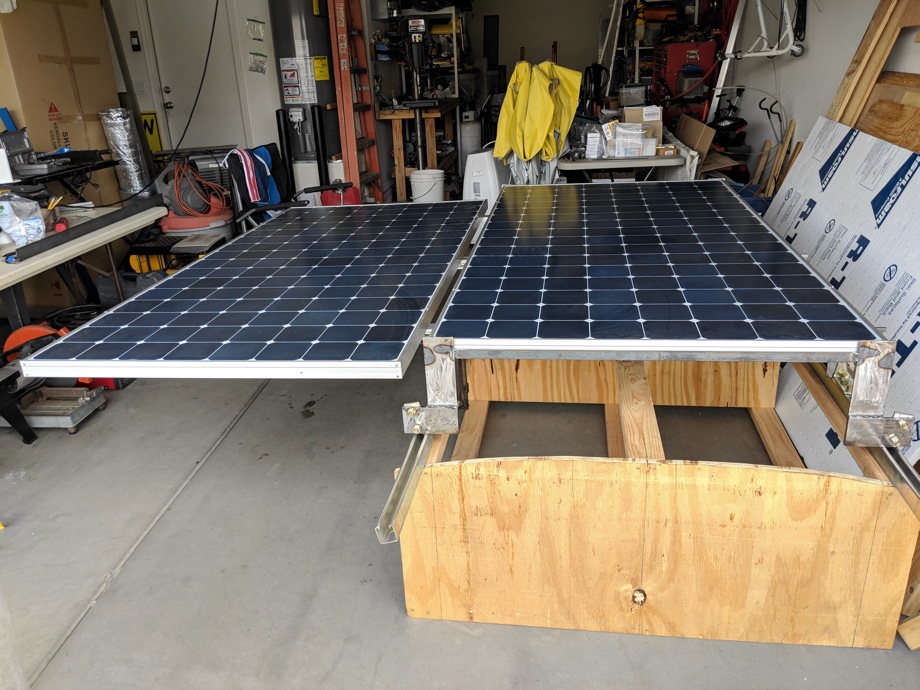
Up next: We go into assembly line production mode to make three more upper and lower units, and we design and build clamps to hold all the panels in place securely. If we have time, we will address the linear actuator for the lower panel.
Watch the video:
Click here If you cannot see the video.



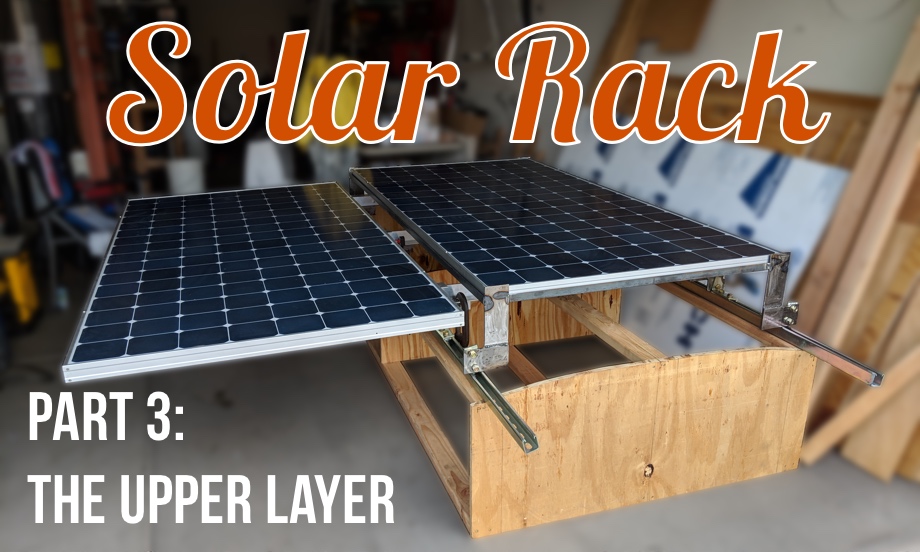






0 Comments
Comments powered by Disqus